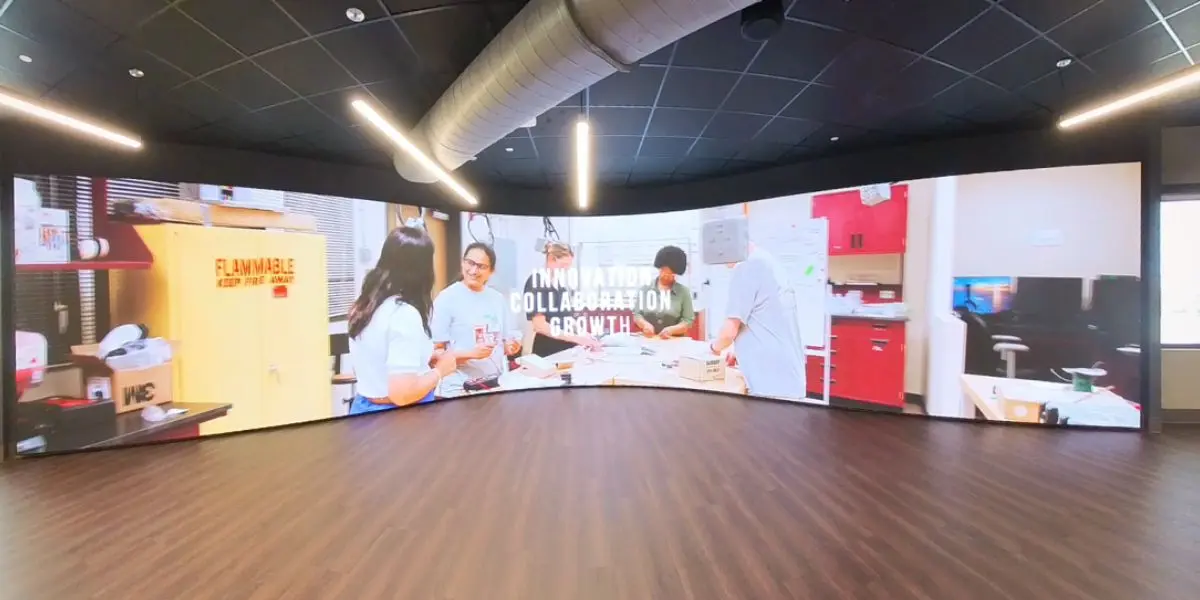
Established in 1820 and welcoming its first students in 1831, the University of Alabama is the oldest and largest public university in the state. With over 39,000 students, the University of Alabama is a leading academic institution recognized for its research initiatives and commitment to innovation across various disciplines. The university plays a pivotal role in advancing education, technology and infrastructure throughout Alabama and the broader southeastern region.
As part of its forward-thinking mission, the University of Alabama initiated the construction of the $40 million Smart Communities and Innovation Building (SCIB), a facility designed to serve as a hub for transportation research and sustainable mobility solutions. This state-of-the-art building is home to key partners, including the Alabama Department of Transportation (ALDOT), the Alabama Transportation Institute (ATI), local traffic engineering entities and the Alabama Mobility and Power Center. The SCIB is a collaborative workspace and a centerpiece in the University of Alabama’s efforts to advance electric vehicle (EV) battery technology and sustainable transportation.
Central to the SCIB’s design was the vision to create an impactful and memorable experience for visitors and students. The top floor, in particular, was envisioned as a dynamic space that reflects the innovative spirit of the programs it houses. When visitors arrive, they are greeted by a spacious, light-filled lobby overlooking a courtyard – an area specifically designed to make a lasting impression. Inspired by similar installations, SCIB leadership proposed a curved LED video wall that would anchor the space visually and symbolically.
To bring that vision to life, the University of Alabama collaborated with Flynn Design Services and Davis Architectural to integrate the display into the building’s architecture. Their plan involved sealing six upper-story windows to make room for a 55-foot concave LED video wall stretching the length of the lobby. After evaluating multiple manufacturers, the team selected Nanolumens for its ability to provide a true curved display solution that was both visually seamless and cost-effective.
“We met with two manufacturers,” said Trevor Flynn, CTS-D, owner and principal architect for Flynn Design Services. “One had proposed a faceted curve solution, which is essentially flat panels arranged to simulate a curve. Not only did that lack the smooth aesthetic we wanted, but it was more expensive. Nanolumens offered a better alternative with actual curved panels. They proposed using their NixelFlex curved panels for the center of the wall and NixelRigid panels on the sides. That hybrid solution gave us the continuous curve we needed without exceeding the budget.”
The result was a stunning, immersive digital installation that immediately captures attention and reflects the building’s technological sophistication. From early design renderings to structural planning, the project was meticulously coordinated to ensure the display’s structural and visual integration. The LED wall has become a powerful visual anchor for the SCIB, highlighting its mission to accelerate innovation and connect technology with community impact.
Flynn praised the experience of working with Nanolumens, noting the technical expertise that contributed to the project’s success. “Dan [Rossborough, Director, Strategic Projects] from Nanolumens was invaluable. He helped us plan for everything, including power, data, structure and even the exact curve radius. Nanolumens’ documentation was so precise, and the 3D Revit models were some of the best I’ve ever worked with. I’ve actually used their models on other projects where we had to specify different vendors just because Nanolumens’ tools were that much better.”
Having worked with Nanolumens for over a decade, Flynn expressed confidence in the outcome. “ESB Group handled the installation, so when we came back for the follow-up visit, everything was flawless. The system was running smoothly and the university team was already creating and managing content like pros. That kind of result speaks for itself.”
The Nixel Series offers a true curve without visible facets, enabling seamless and stunning visual designs. Engineered for maximum creative flexibility, the Nixel Series allows full customization of size, shape and curvature to suit even the most complex architectural environments. With pixel pitches ranging from 1.56mm to 9mm, Nixel Series displays provide clear, vibrant visuals at virtually any viewing distance or angle. The Nixel Series is ideal for wrapping around pillars, fitting flush into corners or appearing to float, thanks to their slim, contour-hugging design. Built-in mounting eliminates the need for third-party structures, allowing smooth integration into nearly any space.